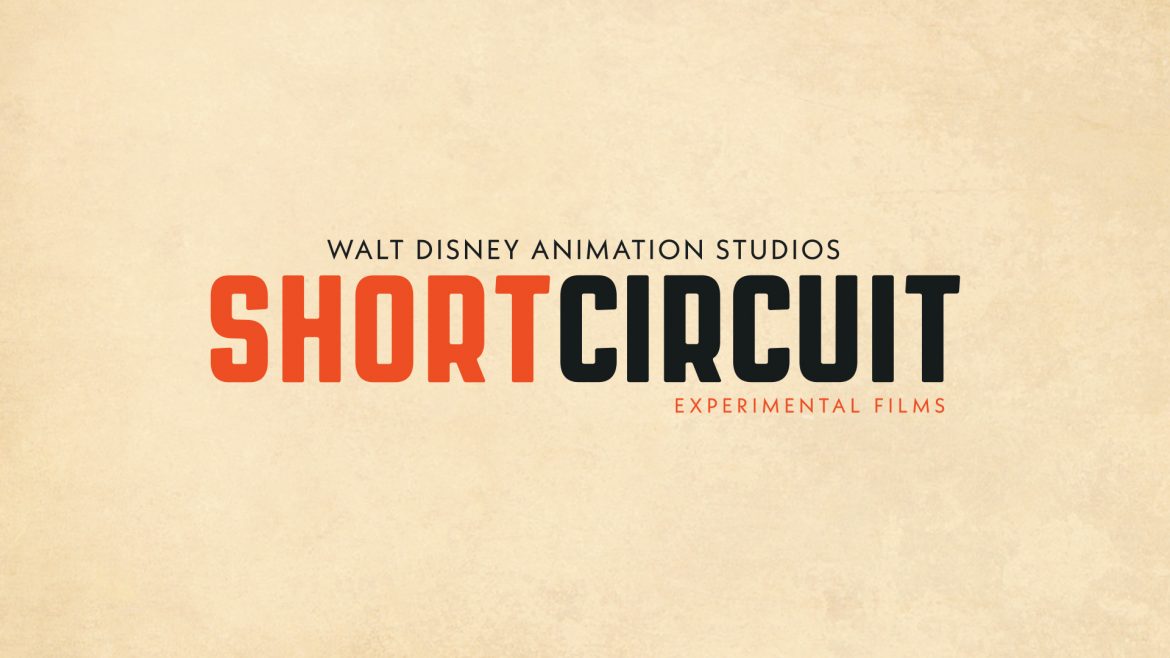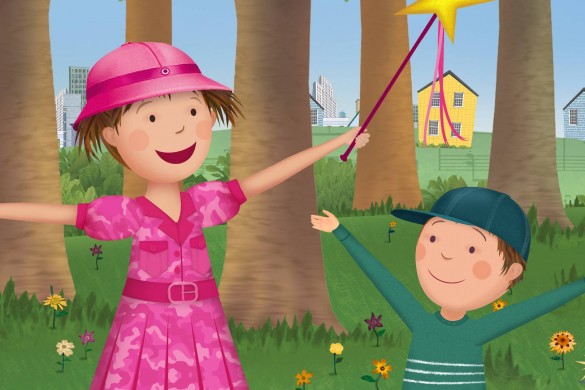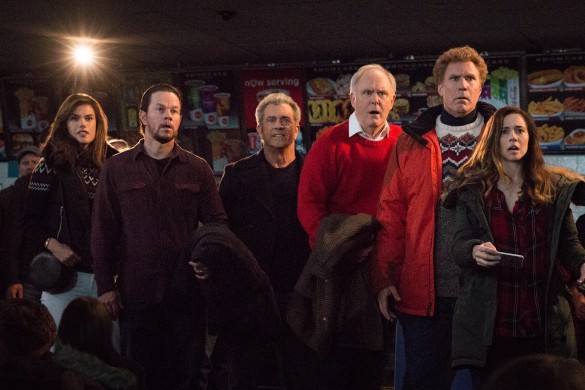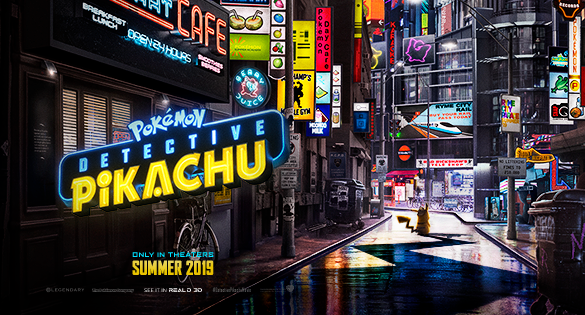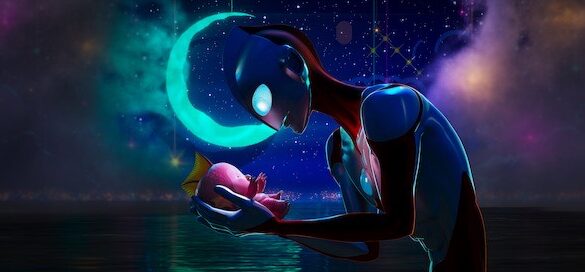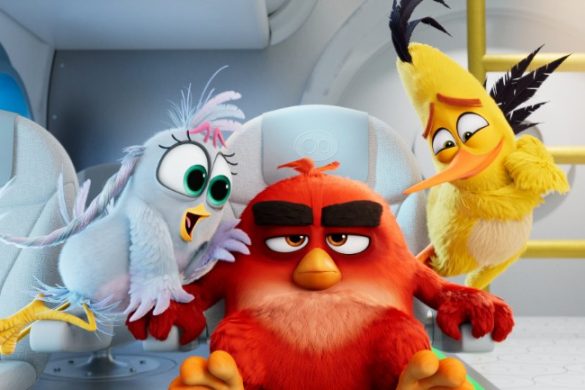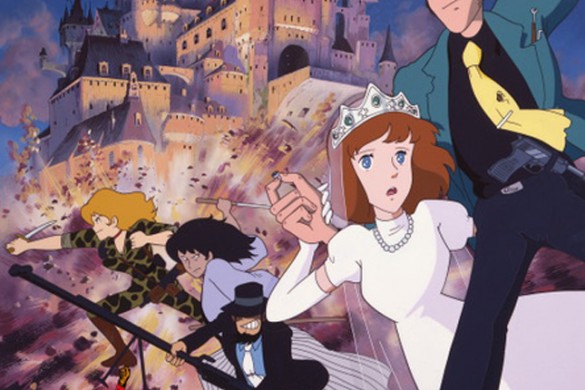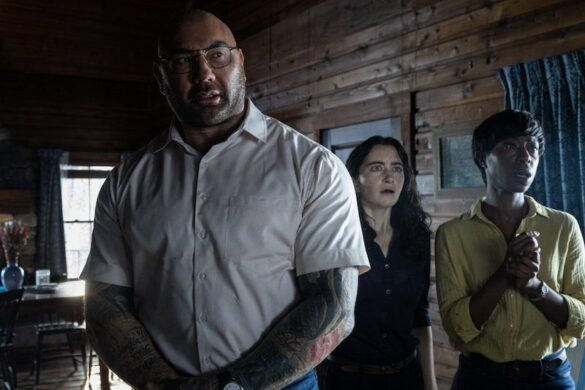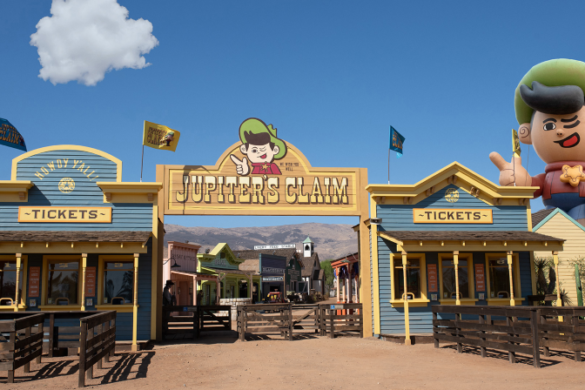Disney’s “SHORT CIRCUIT” is a series of experimental animated shorts that allows many of the talented artists within Walt Disney Animation Studios to pitch an idea and create that story in their vision. With the help of their fellow artists and the studio itself, these shorts tests technological innovations in the filmmaking process. And now, with season 2 on the way, we are getting a look at those advancements through different animation styles.
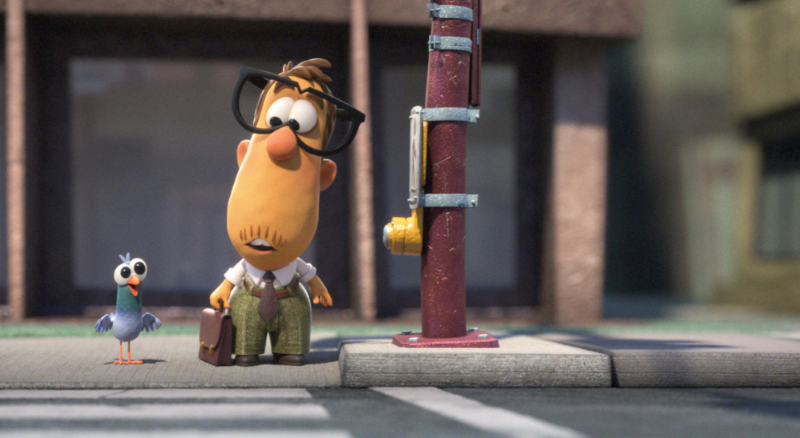
ThatsItLA had a chance to participate in a virtual press conference with Short Circuit filmmakers Kim Hazel (“Dinosaur Barbarian” Director) Riannon Delanoy (“Songs to Sing in the Dark” Director) Ryan Green (“Crosswalk” Director) Liza Rhea (“No. 2 to Kettering” Director) Jacob Frey (“Going Home” Director), and Jennifer Newfield (SHORT CIRCUIT Production Manager) to talk about their respective shorts, the challenges that they faced, the pitching process, and making a fully fleshed out story work within a very limited time frame.
Frey admits that it is tough to tell a full story “for the amount of time and really making sure that all the piece of trying to tell our parts in those two minute.” In “Going Home,” a young adult repeatedly visits his hometown, but with every new arrival he starts to face the inevitable: change. Though these changes happen at a rapid fire pace it represents how life comes at a person quickly and how much we miss those events, big or small, whenever we are not around. For his part, the director spent a lot of time working with storyboards make sure that everything works the way we wanted, and everything in there.
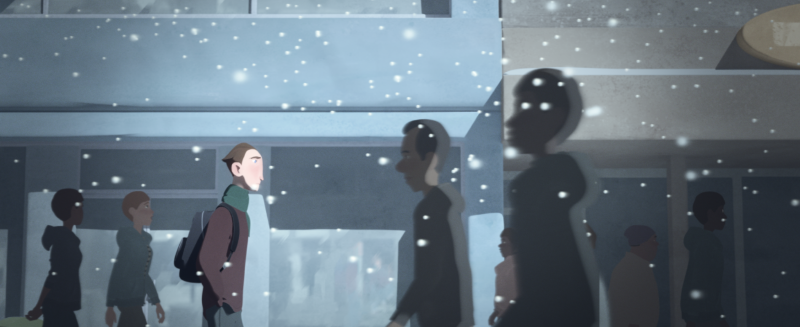
“In general, is just really complex and takes a lot of work. And whether it’s two minutes or 90 minutes, it requires a lot of people and doesn’t really get easy, easier if it’s shorter,” Frey said about telling a story in two minutes. “I mean, some of my projects that I’ve done, prior to my time at Disney, it took me one and a half years for three minutes for the small team. And so I’m super lucky to have an amazing team of Disney artists working on this and being able to do this in much less time, but still a lot of work.”
But the experience was a bit different for Delanoy, who had the advantage of working with an already produced soundtrack. The director, who comes from a line of research scientists, helmed “Songs to Sing in the Dark,” a sound based short that nocturnal creatures engage in a battle of acoustic one-upmanship. As things escalate, they come to realize that they are stronger together.
“One of the big things I looked at was just really simplifying the plot. Because the more stuff you try to cram in, the more, the more it tends to kind of balloon out,” Delanoy said. “Once you get into editorial and animation, it’s like, oh, ‘I really need to be here,” or ‘I really need a little bit more breathing room here for this edit.’ And you just have less things happen in the short and you really clarify exactly what you want to do, upfront and keep the story pained. That prevents it from swelling later. Also, having a soundtrack really helps, because then it’s like, you’re kind of locked to that timing.”
Rhea, who directed “No. 2 to Kettering,” had not considered the short runtime until after her pitch of a girl goes on a bus full of people. The environment modeler said she had the bus, the town, and its people, and thought everything would be fine. “I was like, ‘hang on a minute, actually, I’m not a character modeler, and we’re gonna have to figure out how we’re going to within the resources available to us and make a bus full of unique looking characters that don’t look like any character from a Disney film that was previously done,’” she said. “So there was a lot of figuring out, okay, maybe we can manipulate the shape and sizes, or facial features and skin tone and clothing, using look and animation and blend shapes. It was quite a feat. Getting them to look, I hope they look different from other films. But um, so yeah, that was the biggest challenge for me was trying to make the characters look unique as possible.”
“Thinking about the limited amount of time that we have to work in, you know, like the feature films that that we work in, normally, they get to hit all different dynamics of comedy, drama, action,” Green said. In “Crosswalk,” a law-abiding citizen must find his inner strength to cross the street at a light that won’t change. Ironically, the inspiration behind it came from the actual crosswalk that separates Walt Disney Studios from the animation studio. “Ideally, it’d be nice to have a little bit of each in there. But you know, I think like, what’s important to just this piece is so short. And so I went with comedy and made it more lighthearted.”
For Green, there was also the issue of having no time for a character intro, which meant having to create an everyman that the audience could relate to. “I just tried to make them more of an everyman that you could easily just get at a glance and understand he’s going to work and, and just be right on board from the very beginning.”
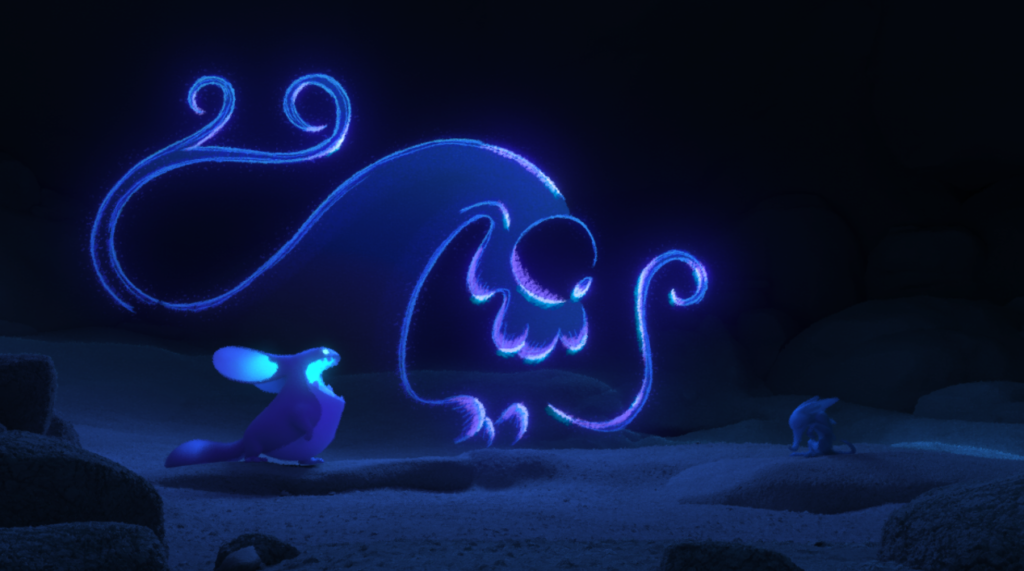
Like “Songs to Sing in the Dark,” Hazel already had a song composed by the Ilmando Boys before the animatic. “I actually picked dinosaur barbarian as a song intentionally to tell the story I wanted to tell within the time allotted for ‘SHORT CIRCUIT,’” she said. “From the beginning, it was designed to be like a snack. And at that point, it was I mean, I don’t know. I’m just happy it all worked out.”
Every one of the shorts that appear on “SHORT CIRCUIT” are product of the animation studio’s vision to take risks, surface new and diverse storytelling voices at the Studio and experiment with new technical innovation in the filmmaking process. It’s a collaboration between the various departments within the studio and how all of the talented artists available take time out of their busy schedules – because these are also being made during the production of a feature film – to help the director with their passion project.
Short Circuit production manager Jennifer Newfield spoke about that collaboration and how it helped them with keeping them on track to work within the short runtime parameter. “Partnerships are so important. I mean, all along the way, the partnership between creative logistics, and every part of animation is essential and crucial. But I think what’s really unique about this program is the way that we’re kind of a small corner of the studio, which is delightful, we get to curate our own way of working,” she said. “And for me, I think my partnership with the directors makes that function in a really unique way. Because I’m always keeping their top priorities of creative and mind.”
Newfield talked about how they meet with the directors long before the production of the short begins so that she can figure out the logistics of actors, the creative vision, what they want to get out of the program, and what their focus should be. “I hope I end up succeeding and supporting them in their creative vision in the in the wings and behind the scenes,” she said. “Kind of detailing things as much as I can or bringing to them mentors if they need to, if they feel like they have blind spots, or are having really deep conversations about complexity and how we can accomplish what they’re going for, in creative ways.”
“Similar to what a lot of the folks were saying they just kind of make compromises, but never to the integrity of what their original creative vision was or we go back to their pitch and look at what they were really trying to accomplish in the very beginning,” Newfield added. “There’s some challenging conversations that sometimes happen along the way, but only out of passion. And that’s okay by me. If it’s a conversation and a passion for your idea, and you’re short and trying to make it the best it can be, I’m always willing to come to the table or to go fight for the resources that they may need. But ultimately, we come to a similar agreement, especially because there’s such a swath of amazing projects that go on in this program at any given time.”
And these directors all learned a variety of different things being behind the director’s chair for the very first time. For Delanoy, she learned that production runs a lot smoother when you stay calm and centered. “When it’s your first time running things, you’re just like, ‘oh my gosh, I can’t screw this up,’” she said. “But it’s really like, the more center you are it, everything else just kind of becomes more calm and collected. And then you get to really have fun and play guy, I had so much fun, meeting people and working with them and being inspired by their ideas.”
And because the program offered Hazel the chance to collaborate with these different departments, she gained a greater appreciation for the crew’s enthusiasm and creativity. “It was just super fun to watch people make something in a really excited way,” she said. “It was the enthusiasm. It was infectious. It really was when we were doing reviews for ‘Dinosaur Barbarian’ at work. Like sometimes there would be like a crowd of people that would gather to just sort of observe what was happening because it was just silly and fun.”
Having worked on specific tasks for so long, Frey gained a better understanding of delegating tasks and seeing what becomes of putting that trust into others. “I had to delegate the work to others, and really trusting them and letting them cluster work. And then just being surprised by how much they add to every shot with their own ideas,” he said. “Being director as someone who supports them, and maybe does the tasks that other people’s weren’t, like super excited about. That was really my goal at that short to really set everyone up to successes as best as I could. And that’ll then create like a nice group dynamic. And that was really the focus during my production to have everyone have a great experience and make this like a fun little shot.”
Rhea had a similar experience as Frey when it came to trust. “Relinquishing that control and being able to say, ‘I know you are an expert in your field, so I’m not going to pretend that I am, because I don’t know as much as you do about this area,’” she said. “So being able to go, ‘oh, my God, you made this so much better than I could even imagine making it was,’ it was just phenomenal, because the talent at Disney blows me away in general. And so seeing someone bring your idea to life, with their exceptional skill set was just a dream come true.”
Similarly, Green spoke about putting his trust in the animator’s talents. “Over the whole course of the piece, I think I just learned that the director’s job is just to guide the conversation, and just then you in the director has to keep in mind, the clarity of the theme and just the consistency of the style and just let the artists flourish,” he said.
Short Circuit (Season 2) is streaming exclusively on Disney+ starting August 4, 2021.

